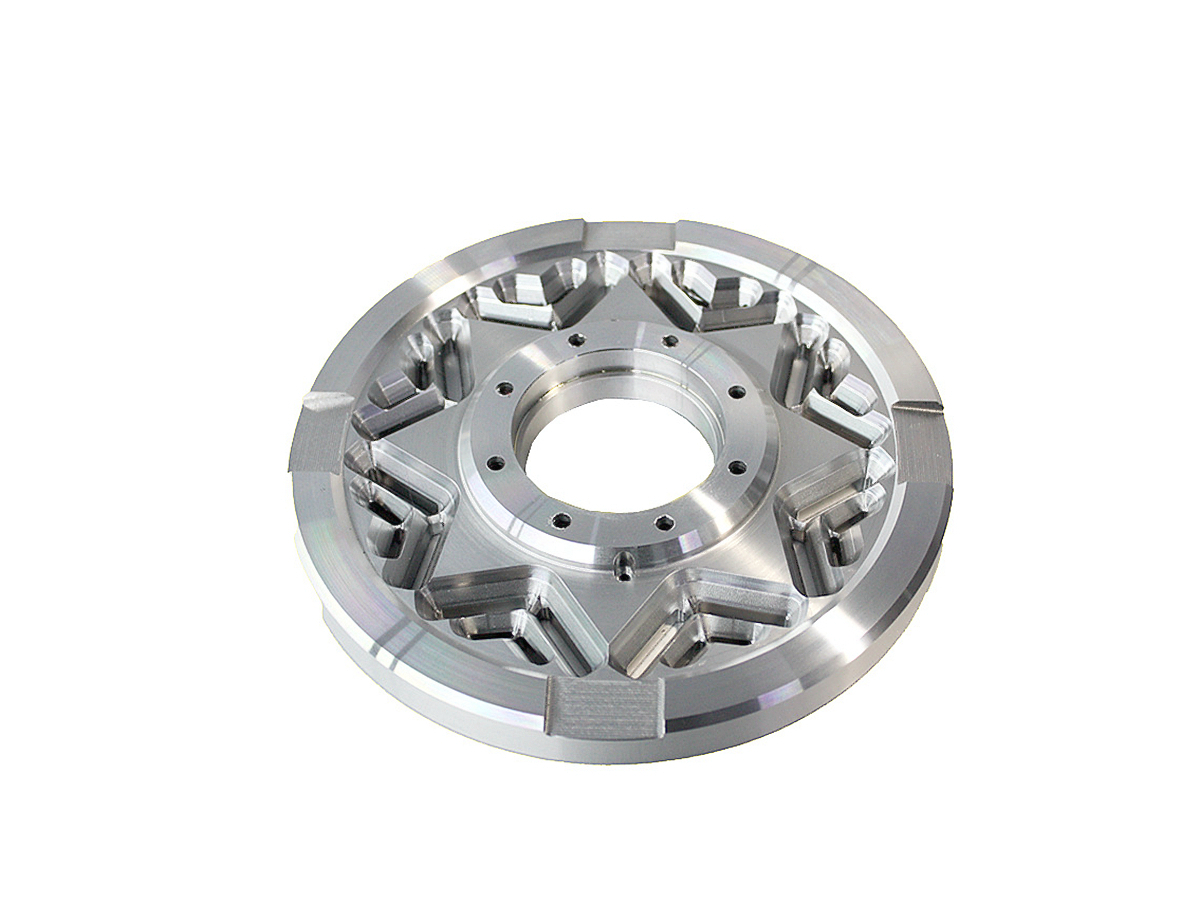Precision Engineering: A Case Study on Multi-Axis CNC Machining of Aerospace Components
Introduction
The aerospace industry demands exceptional precision, reliability, and quality in every manufactured component. Aerospace parts must withstand extreme operational environments, high mechanical stresses, and stringent regulatory standards. Multi-axis CNC machining, known for its capability to produce complex geometries with outstanding accuracy, has become essential for manufacturing critical components such as turbine blades, structural frames, and intricate engine parts.
Advanced multi-axis CNC machining services enable aerospace manufacturers to achieve unparalleled dimensional accuracy, superior surface finishes, and consistent quality. This significantly improves component performance, reduces assembly time, and enhances overall aircraft safety and efficiency.
Aerospace Grade Materials
Material Performance Comparison
Material | Tensile Strength (MPa) | Yield Strength (MPa) | Density (g/cm³) | Typical Applications | Advantage |
|---|---|---|---|---|---|
900-1100 | 830-910 | 4.43 | Landing gear, turbine blades | Excellent strength-to-weight ratio, corrosion resistance | |
570 | 505 | 2.81 | Aircraft frames, structural components | High strength, lightweight, excellent machinability | |
1240-1450 | 1030-1240 | 8.19 | Engine components, turbine blades | Outstanding high-temperature strength, creep resistance | |
1000-1310 | 862-1172 | 7.75 | Structural fittings, fasteners | Excellent corrosion resistance, high mechanical strength |
Material Selection Strategy
Choosing the appropriate aerospace-grade material involves careful consideration of specific application demands:
Components requiring high strength and low weight: Titanium Alloy Ti-6Al-4V provides an optimal balance of mechanical strength, corrosion resistance, and weight reduction.
Lightweight structural and frame components: Aluminum 7075-T6 delivers excellent machinability, high strength, and significant weight savings.
High-temperature engine and turbine parts: Inconel 718 offers exceptional creep resistance, thermal stability, and mechanical strength under extreme heat conditions.
Structural fasteners and fittings exposed to corrosive environments: Stainless Steel SUS630 (17-4PH) ensures superior corrosion resistance and reliable strength.
CNC Machining Processes
Process Performance Comparison
Multi-Axis CNC Machining Technology | Dimensional Accuracy (mm) | Surface Roughness (Ra μm) | Typical Applications | Key Advantages |
|---|---|---|---|---|
±0.02 | 1.6-3.2 | Simple brackets, panels | Cost-effective, suitable for simpler components | |
±0.015 | 0.8-1.6 | Complex frame components, brackets | Improved accuracy, reduced machining setups | |
±0.005 | 0.4-0.8 | Turbine blades, impellers, complex structural parts | Exceptional precision, superior surface finish | |
±0.003-0.01 | 0.2-0.6 | Intricate aerospace components, complex assemblies | Highest accuracy, capable of extremely complex geometries |
Process Selection Strategy
Selecting the optimal multi-axis CNC machining process depends on aerospace component complexity and precision requirements:
Simpler aerospace parts with straightforward geometries: 3 Axis CNC Milling provides efficient, cost-effective production.
Components requiring precision machining from multiple angles: 4 Axis CNC Milling delivers increased accuracy and fewer setups.
Complex, high-performance engine and aerodynamic parts: 5 Axis CNC Milling achieves extraordinary accuracy and high-quality finishes.
Highly intricate aerospace components demanding maximum precision: Precision Multi-Axis CNC Machining guarantees exceptional accuracy and performance consistency.
Surface Treatment
Surface Treatment Performance
Treatment Method | Corrosion Resistance | Wear Resistance | Temperature Stability (°C) | Typical Applications | Key Features |
|---|---|---|---|---|---|
Excellent (>800 hours ASTM B117) | Moderate-High (HV350-500) | 200-300 | Aluminum components, airframe parts | Enhanced corrosion resistance, lightweight protection | |
Excellent (>1000 hours ASTM B117) | High (HV1000-1200) | Up to 1150 | Turbine blades, combustion chambers | Reduces heat transfer, extends component life | |
Excellent (700-900 hours ASTM B117) | Moderate | ≤400 | Precision engine components, hydraulic fittings | Smooth, low-friction surfaces, improved corrosion protection | |
Good (500-700 hours ASTM B117) | Moderate-High (increases fatigue life by ~30%) | ≤400 | Structural components, turbine blades | Enhanced fatigue resistance, beneficial compressive stresses |
Surface Treatment Selection
Surface treatments for aerospace components must align closely with operational conditions:
Aluminum structural parts needing corrosion protection: Anodizing provides lightweight protection with minimal impact on weight.
High-temperature turbine and combustion components: Thermal Barrier Coating significantly extends component lifespan under extreme conditions.
Precision components requiring smooth surfaces and friction reduction: Electropolishing offers excellent corrosion resistance and friction control.
Fatigue-critical structural components: Shot Peening enhances component life through induced compressive stresses and fatigue resistance.
Quality Control
Quality Control Procedures
Dimensional inspections via advanced Coordinate Measuring Machines (CMM) and optical comparators.
Surface roughness and finish verification using precision profilometers.
Non-destructive testing (NDT), including ultrasonic, radiographic, and eddy current inspections.
Mechanical testing for tensile strength, yield strength, and fatigue performance (ASTM standards).
Comprehensive corrosion resistance validation (ASTM B117 Salt Spray Testing).
Documentation conforming to AS9100, NADCAP, ISO 9001, and FAA aerospace standards.
Industry Applications
Aerospace Component Applications
Aircraft structural frames, brackets, and supports.
Precision turbine blades and impellers for jet engines.
Landing gear components require high strength and reliability.
Complex hydraulic and fuel system components.
Related FAQs:
What makes multi-axis CNC machining essential in aerospace manufacturing?
How do different aerospace materials impact CNC machining choices?
Which surface treatments improve aerospace component durability and performance?
What aerospace quality standards must CNC-machined components meet?
How to select the right multi-axis CNC machining process for complex aerospace components?

